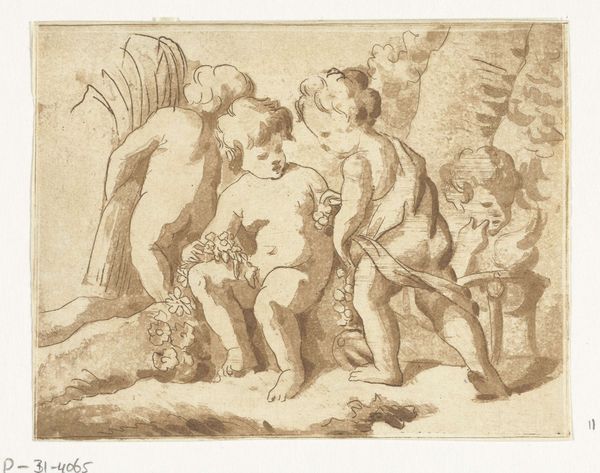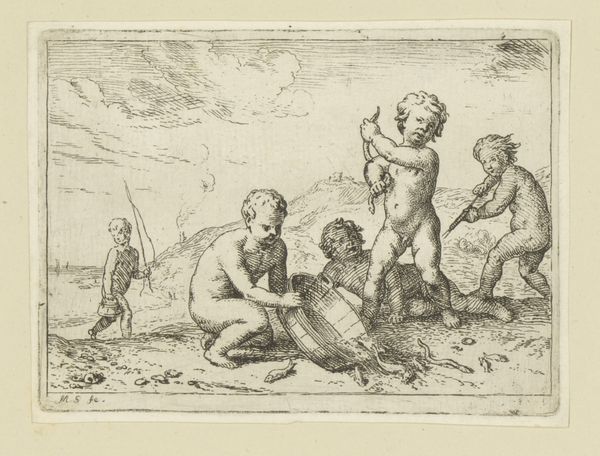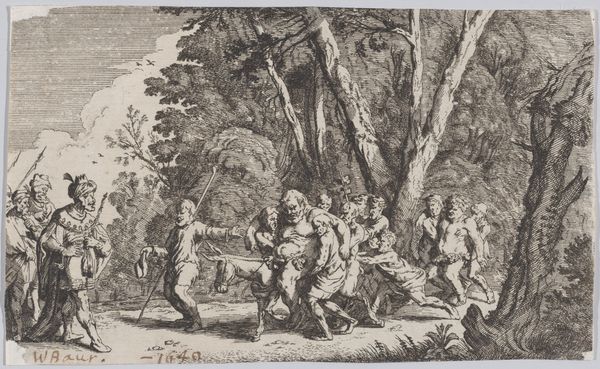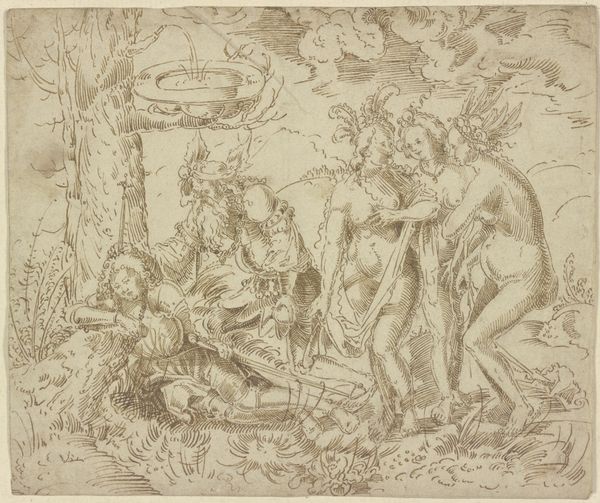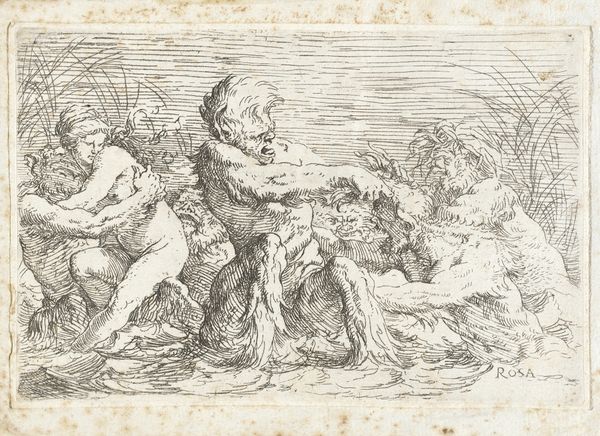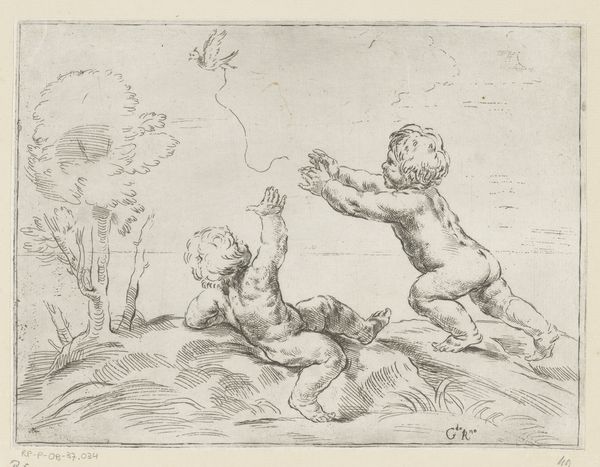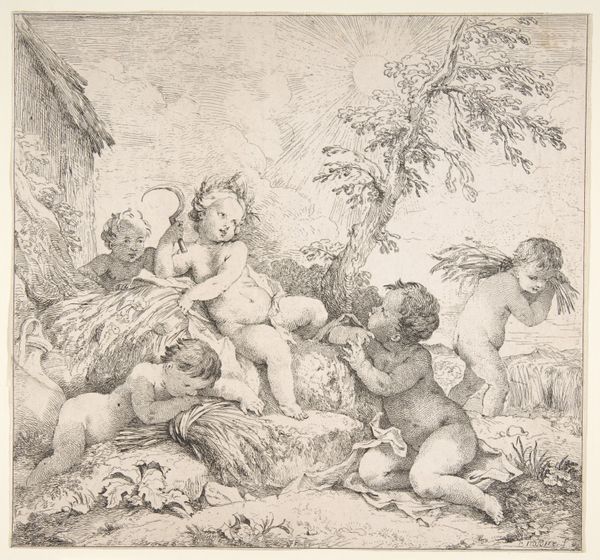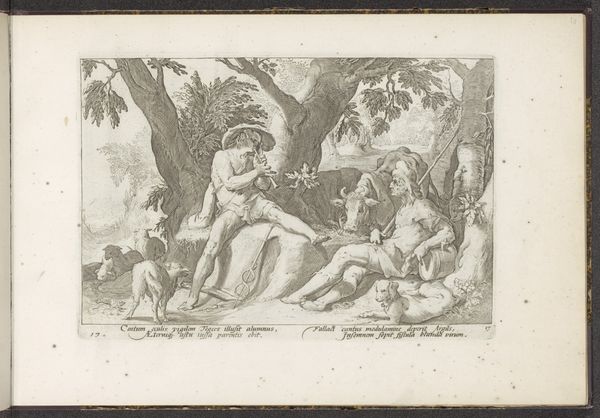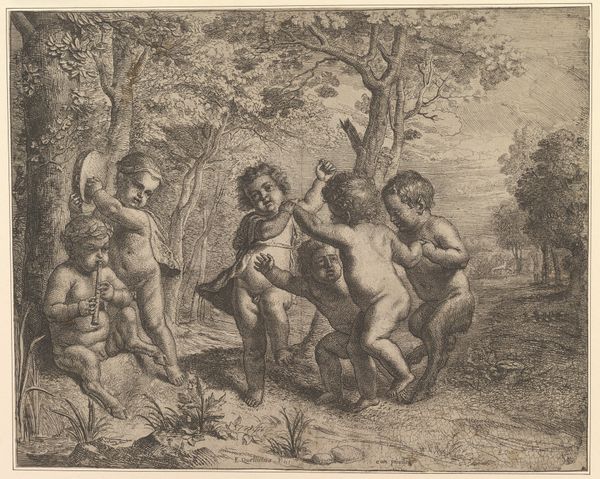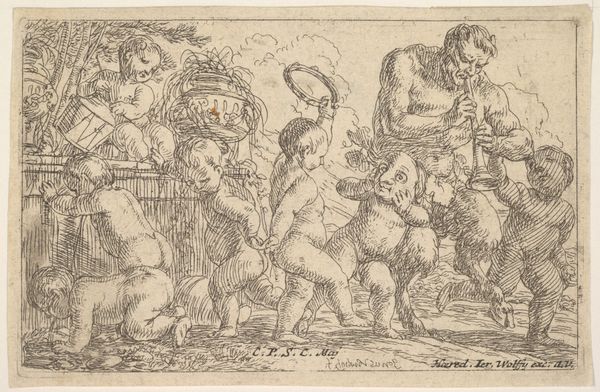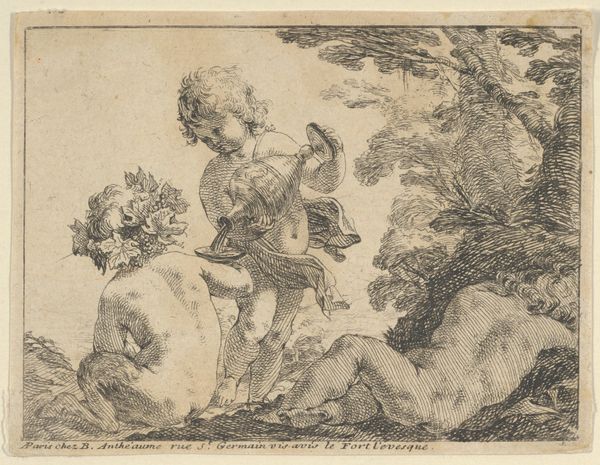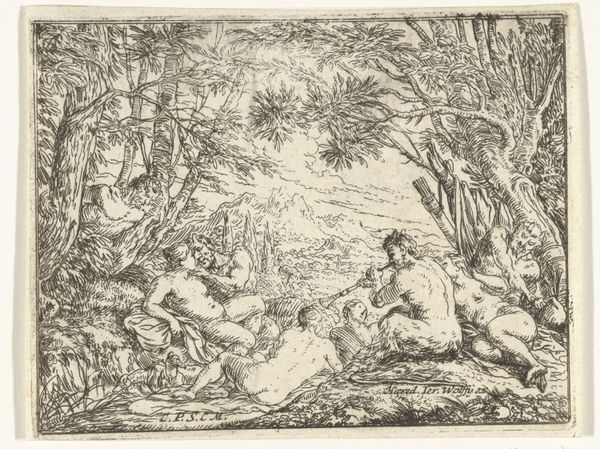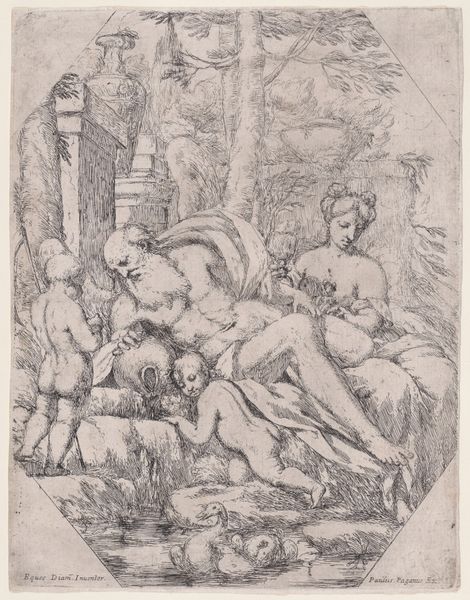
Young Saint John the Baptist kneeling before the infant Christ who caresses his face, the Virgin and Joseph in the background at right, after Reni 1595 - 1645
0:00
0:00
print, engraving
#
baroque
# print
#
figuration
#
history-painting
#
engraving
#
virgin-mary
#
christ
Dimensions: Sheet (Trimmed): 4 3/4 × 6 5/8 in. (12.1 × 16.9 cm)
Copyright: Public Domain
Editor: So, this print is called "Young Saint John the Baptist kneeling before the infant Christ who caresses his face, the Virgin and Joseph in the background," made sometime between 1595 and 1645, after Guido Reni. It's an engraving, a pretty detailed scene. I’m struck by the tenderness, yet something feels almost staged, even performative about it. What do you make of this, seeing it through the lens of cultural and historical forces? Curator: You've hit on something important. These depictions weren't just sentimental; they were powerful cultural tools. Consider the period: the Counter-Reformation was in full swing. The Church needed to reassert its authority and inspire piety. Images like this one, circulating widely through prints, became vehicles for that agenda. Editor: So the printmaking helps it reach a wide audience, conveying particular values. I wonder how people at the time felt about these images. Curator: Precisely! And think about the intended audience: How might the performance of humility enacted here invite the public toward similarly pious action? Did viewers feel included or excluded from the familial exchange pictured here? Images such as this sought to humanize religious figures, fostering empathy, while subtly reinforcing hierarchical social structures and Church doctrine. Editor: That’s fascinating. It wasn’t just about art, but about social engineering. And seeing the work now in the Metropolitan Museum, I am prompted to wonder, in what ways do our museums also have that kind of public function and play a role in contemporary social norms? Curator: An excellent question. How might institutions shape or filter our understanding and experience of art? That relationship shifts over time and depending on where the image is located. The life of art extends beyond initial production. Editor: It definitely gives me a lot to think about. I hadn't considered how deeply these images are embedded in a specific historical context, serving cultural and even political purposes. Curator: Exactly! Hopefully, you leave with an awareness that art exists in a much wider field. I’ve certainly found our chat insightful as well.
Comments
No comments
Be the first to comment and join the conversation on the ultimate creative platform.

